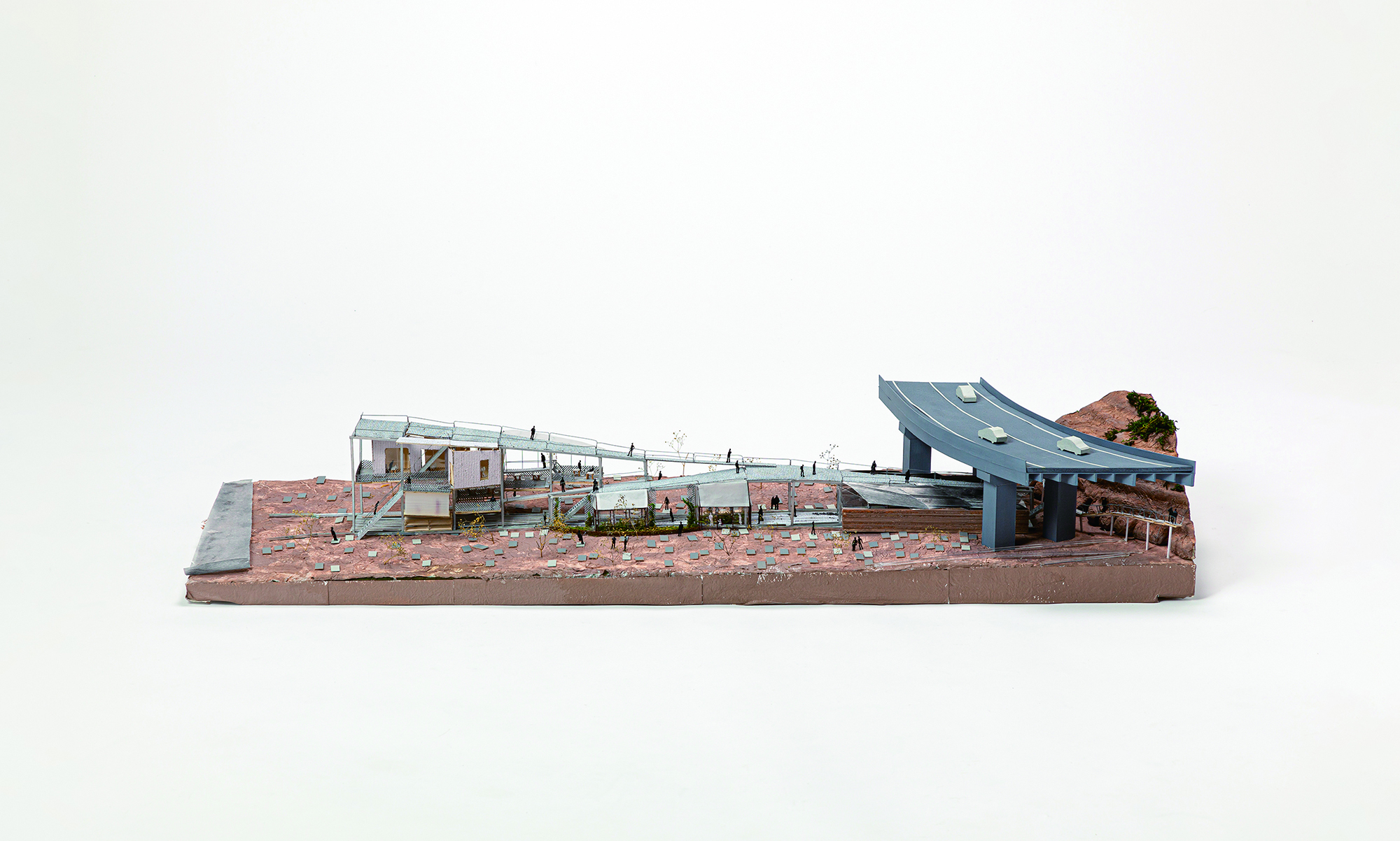2017年度建築学科卒業制作優秀作品『復刻都市〜遺跡保存の構法計画〜』Selected Diploma Project from 2017, ”Revived City - Construction Plan for Archeological Preservation -”
建築学専攻Department of Architecture

東京都世田谷区の東名高速外環道JCT建設現場において、工事中に奈良時代の大規模な横穴墓遺跡が発掘されました。遺跡は工事に厄介な「遺物」として破壊されましたが、壊さずに地域の「遺産」としての活路もあり得ました。
そこで本提案では、高速建設工事を行う際も、遺跡を破壊せず保存活用するための「4段階」: 1.発掘現場 2.遺跡調査 3.高速建設 4.保存修復からなる建築の計画を行います。
遺跡の保存上、建築が段階を移行する際に、部材の各段階から次段階への「転用」を構法的に計画することで、状況ごとの外因的な形態の「変化」によらず、同じ部材の使用から、遺跡保存の機能は定常的に「維持」されるようになります。また、遺跡は保存後も定期的に修復を必要とし、建築は終わることなく「更新」されていきます。
こうして保存された遺跡は「物の変化」を生じ、建築を介して、変化から維持へ、維持から参加へと、物と人の関わりから、新たな地域活動の拠点を作り出します。
模型
2018
寸法:1700×1700×450
制作:楊 光耀
所蔵:作家蔵
素材:木、粘土、スチロール他
東名高速外環道JCT建設現場における奈良時代の大規模な横穴墓遺跡の非破壊保存活用をするための「四段階」のフェーズを示した部分模型。
The site is the construction site of the Tomei Expressway Gaikan JCT in Setagaya, Tokyo. During the construction of the expressway, large side-hole tomb ruins from the Nara period was excavated. The ruins were demolished as a “relict” that was troublesome to the construction, however there could be a way of saving the ruins from a demolishing as a “heritage” of the local neighborhood.
This Project proposes a “four phase development” of the site while maintaining the construction of the expressway at the same time conserving the ruins: 1. Excavation of the site → 2. Investigation of the ruins → 3. Construction of the expressway → 4. Conservation and restoration.
The building components will be repeatedly “repurposed” as the construction phase moves from one to another. Regardless of the “change” in the extrinsic form of each stage situation from the use of the same member, the function of preservation of the ruins will be continuously “maintained.” Since the ruins require occasional restorations even after they are preserved, this architecture will be perpetually “updated.”
Thus, the preserved ruins give rise to “changes in things” and create a new base for local activities through the relationship between things and people, from change to maintenance, from maintenance to participation, through architecture.
Model
2018
Size: 1700×1700×450
Production: Kohyoh Yang
Private Collection
Material: Wood, Clay, Styrofoam, etc
Physical models showing the conditions from the "four phase" development of preserving the large side-hole tomb ruins from the Nara period construction site Tomei Expressway Gaikan JCT.

